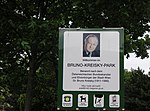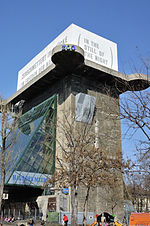Österreichische Mediathek
Archives in AustriaGovernment agencies established in 1960Sound archives

The Österreichische Mediathek ("Austrian Mediathek") is the Austrian archive for sound recordings and videos on cultural and contemporary history. It was founded in 1960 as Österreichische Phonothek (Austrian Phonothek) by the Ministry of Education and has been a branch of the Technisches Museum Wien (Vienna Technical Museum) since 2001. As video and sound archive, the Österreichische Mediathek is responsible for the preservation of the Austrian audio-visual cultural heritage (with the exception of film on photographic carrier material and photography).
Excerpt from the Wikipedia article Österreichische Mediathek (License: CC BY-SA 3.0, Authors, Images).Österreichische Mediathek
Gumpendorfer Straße, Vienna Gumpendorf (Mariahilf)
Geographical coordinates (GPS) Address Nearby Places Show on map
Geographical coordinates (GPS)
| Latitude | Longitude |
|---|---|
| N 48.1923 ° | E 16.3487 ° |
Address
Marchettischlössl
Gumpendorfer Straße 95
1060 Vienna, Gumpendorf (Mariahilf)
Austria
Open on Google Maps








